Fungi are among the most fascinating and mysterious living things in nature. Neither plant nor animal, their ways of life can be hard to understand, and seem counterintuitive. I tend to see this in the types of questions I get from readers and fellow naturalists about fungi. Rather than just, “what kind of mushroom is that?” I often hear lots of “how” and “why” questions. Why is it growing there? How did it get there in the first place? Among these, one of the most common I come across is this: Why do mushrooms grow so fast?
Perhaps you’ve noticed this in your own backyard. One day, a given spot on the lawn, or a stretch or bare soil under a tree are just that. Empty and uninteresting. The next day, they may be inhabited by one or as many as several dozen mushrooms. And not always small ones, either! Sometimes surprisingly large fungal bodies can show up seemingly overnight. But how does this happen? In this Naturalist Answers post, we’ll cover this strange phenomenon and some of the basic fungal biology (or what scientists call mycology) that helps explain it.
What are mushrooms?
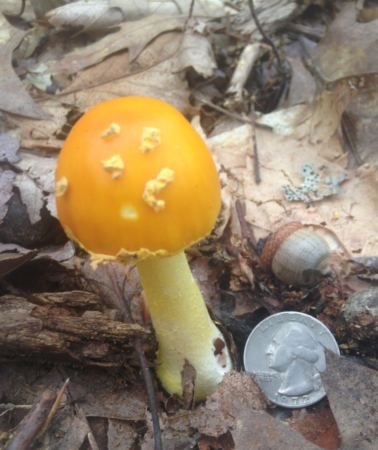
A great place to start is considering what exactly it is we’re looking at. When you spot a mushroom on the ground, on a log, or in a tree, you are only seeing part of a living thing. In other words, the mushroom is not the whole fungus, but just a small part.
This is not so different from looking at a tree, for example. The trunk, branches, and leaves of trees are only the above-ground parts of the plant. In addition to these, there is an extensive root network below ground that might extend even further out than the largest branches.
The above-ground parts of plants like trees are in some ways the “business-end”. Although the roots seek out nutrients, provide water, and can store energy, the leaves are where the action happens. Leaves are responsible for photosynthesis, which is how almost all plants get sustenance, literally making molecules of food using energy from the sun.
Read more: Why are plants green?
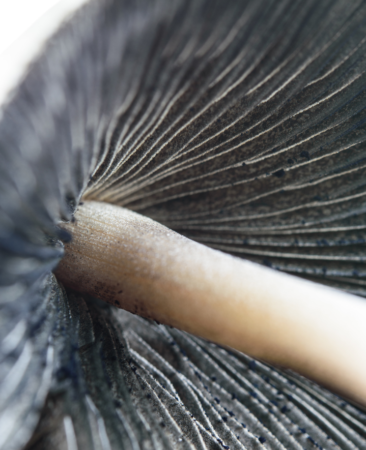
Mushrooms: the “fruit” of the fungus
By contrast, mushrooms are more like a fruit. They are a tiny piece of the much larger organism, and not the place where all the action happens. These fleshy, weird-looking little structures don’t make their own food, or even find it. Like a plant’s fruit or seed, mushrooms are only meant for reproduction. They house microscopic spores, which themselves can grow a new fungus if they move to a favorable location. Just like seeds, they can’t move on their own, and need to be dispersed to a favorable settling spot.
Read more: Lichens are half-fungus “chimeras”!
Mushrooms typically achieve this by making themselves attractive to some type of animal. These might be insects which can carry the tiny spores on their bodies, or mammals that eat the whole mushroom and poop out spores somewhere else. To summarize: mushrooms are the fruiting bodies of a fungus, and they allow the fungus to spread its offspring as spores to new locations.
Read more: How do plants disperse their seeds?
What produces mushrooms?
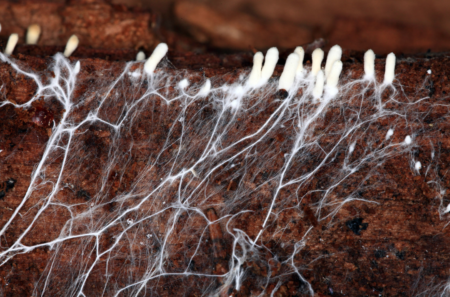
If mushrooms are like fruits bearing seeds, where is the “tree” from which they grow? Of course, the trees-and-roots metaphor only stretches so far, for one important reason: mushrooms are fungi, and fungi aren’t plants. Unlike plants, which conduct much of their business aboveground, fungi don’t need sunlight to get their food.
Fungi, which generate mushrooms, are heterotrophs, which means that they eat other living things to survive. While plants generate their own food using sunlight, fungi, just like animals, have to find a meal. They do this by growing directly on or in what they’re eating, and sniffing out the nutrients they need by growing in long threads called hyphae. As it grows, a single fungus will put out many of these hyphae, forming a network known as the mycelium. This network of hyphae is the main body of the fungus.
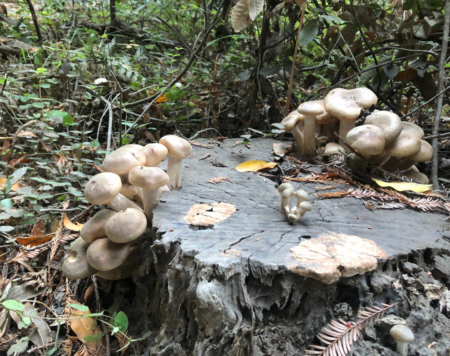
The fungal mycelium
The fungal cells of the mycelium absorb or digest materials from the surrounding environment. For many fungi this is dead organic matter like leaflitter or other detritus, which is why many mushrooms appear directly out of the ground. This mycelium, representing the bulk of the fungus itself, can cover a large area if the food source is extensive enough.
Why is it important to let leaves piles up in parts of your yard?
Importantly, it is very hard to see a fungal mycelium. In other words, we rarely see a fungus in action. Instead, we are more likely to notice mushrooms, which are a tiny part of the whole organism. As we now know, mushrooms are just a sign that a much larger living thing is busily at work underground or inside of the rotting log where we found them.
How do mushrooms grow overnight?
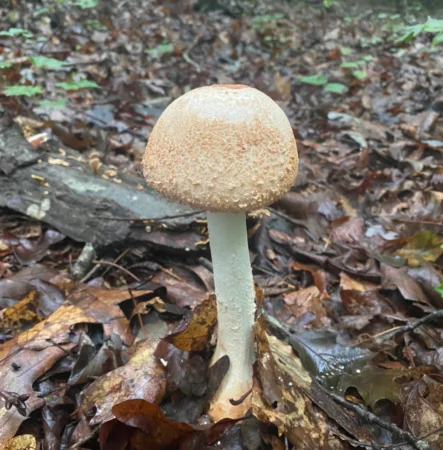
Now that we know what exactly a mushroom is, it will be easier to understand how they appear so suddenly. First, since mushrooms are just a small part of a much larger organism, they don’t come out of nowhere. Mushrooms are produced by a thriving mycelium that is hidden from plain sight. The mycelium could be months, years, or decades old before it reveals its presence with showy little toadstools!
Beyond that, the mushroom itself also doesn’t grow the way a plant does. Plants, with their hard cellular walls and vascular tissue for moving water around, grow relatively slowly as any gardener can attest. Something a few centimeters or inches tall, like many mushrooms, certainly couldn’t grow overnight. By contrast, fungal hyphae can grow very rapidly by extending the tips of their hyphae. This extension doesn’t necessarily require cellular replication, but can just be an elongation of the cells themselves. This is similar to the way that nerve cells grow in animals.
This rapid extension is further enhanced by special intra-cellular “rails” or proteins that allow the fungus to quickly transport the necessary materials for growth to the tip of the hyphae. As a result, fungi can extend their hyphae by fractions of an inch (or several mm!) per day. However, this still isn’t enough to explain how mushrooms, which can be many centimeters or inches in height, can come up in a matter of hours.
That mystery is explained by how mushrooms themselves, as a special fruiting structure, are put together.
How do mushrooms grow?
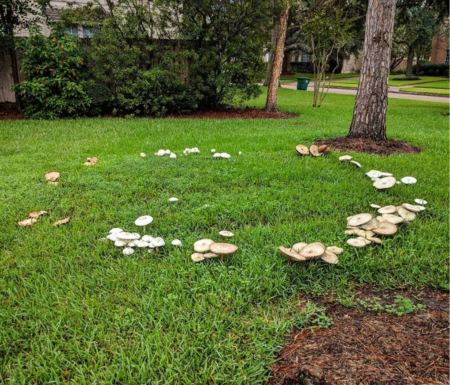
The word “grow” makes us think of houseplants or seedings growing out of a pot when we consider how mushrooms appear overnight. However, a more adequate metaphor might be inflating a rubber glove. When mushrooms seemingly appear out of nowhere, what is actually happening is that an existing shape, specially constructed by the mycelium underground, is being inflated with water. This inflation “unfolds” the already-grown structure to push the mushroom up from underground. Once above-ground, the mushroom can expand and grow to form its final shape and put out spores.
Mushroom “growth”, which includes both rapid growth by the actual fungus and the expansion of already-drown tissues, can be as fast as half a centimeter per minute! With this kind of approach, mushrooms can literally come up overnight.
Thanks for reading about mushrooms!
Have you come across any neat mushrooms in your garden, or on a recent nature walk? Share with us in the comments! If you enjoyed this post, please support the blog by sharing it with friends and family or on Social Media. If you have a question you’d like featured in Naturalist Answers, drop us a line using the Contact Page. Until next time, get to know your natural world!
Sources and further reading
1. Steinberg, G. 2007. Hyphal Growth: a Tale of Motors, Lipids, and the Spitzenkorper. Eukaryotic Cell 6(3): 351-360.
2. Sheldrake, M. 2020. Entangled life: How fungi make our worlds, change our minds, and shape our futures. Random House, New York.
3. Steinberg, G. et al. 2017. Cell Biology of Hyphal Growth. Microbiology Spectrum 5(2).
4. ScienceDirect Topic: Fungus Hyphae.
5. Jordan, P. and Kilkenny, N. The Mushroom Guide & Identifier: An Expert Manual for Identifying, Picking, and Using Edible Wild Mushrooms Found in Britain.
6. National Audubon Society, 2023. The National Audubon Society Mushrooms of North America Field Guide. Penguin Random House.
7. Stamets, P. 2005. Mycelium Running: How Mushrooms can Help Save the World. Ten Speed Press.
8. Arora, D. 1986. Mushrooms Demystified. Ten Speed Press.

